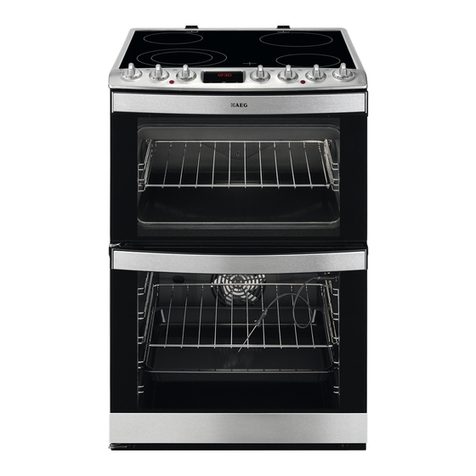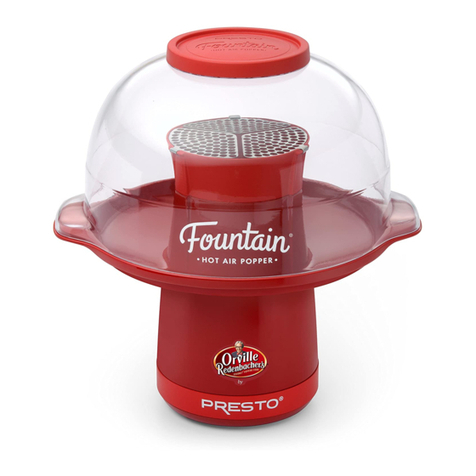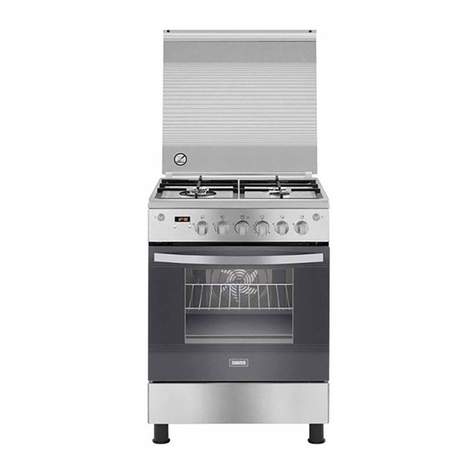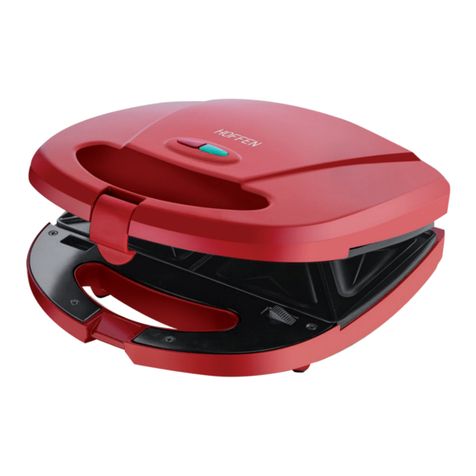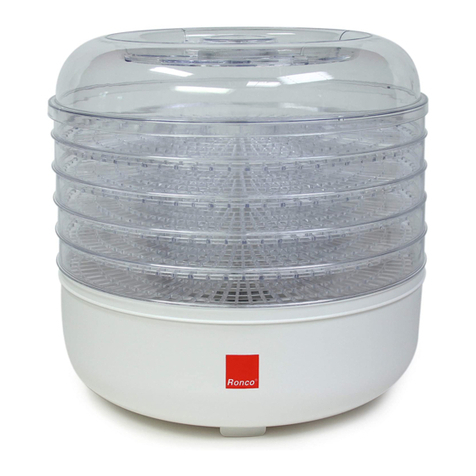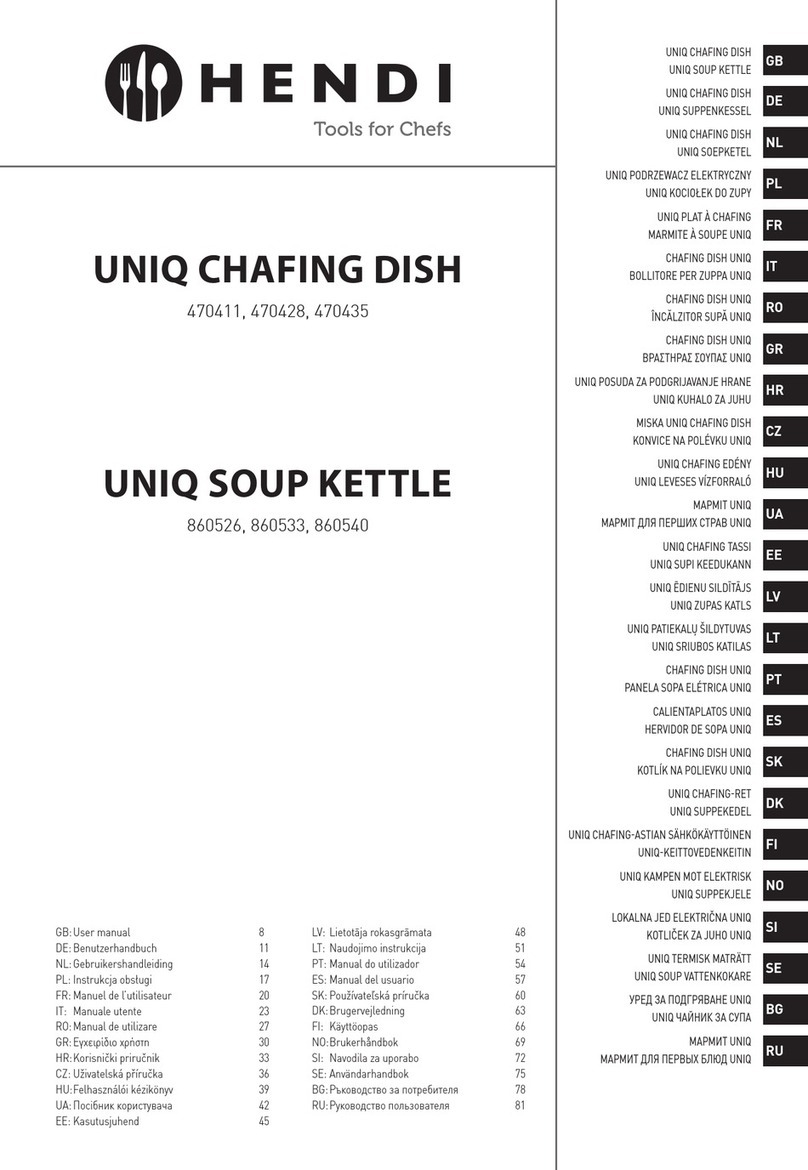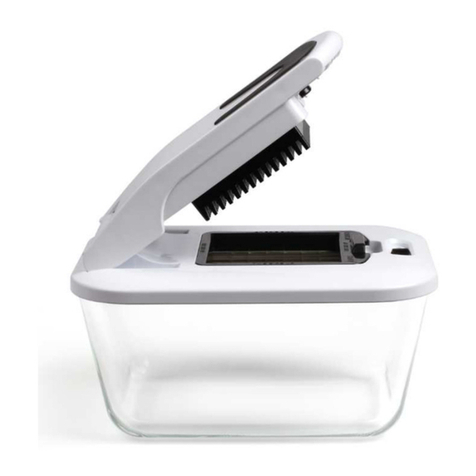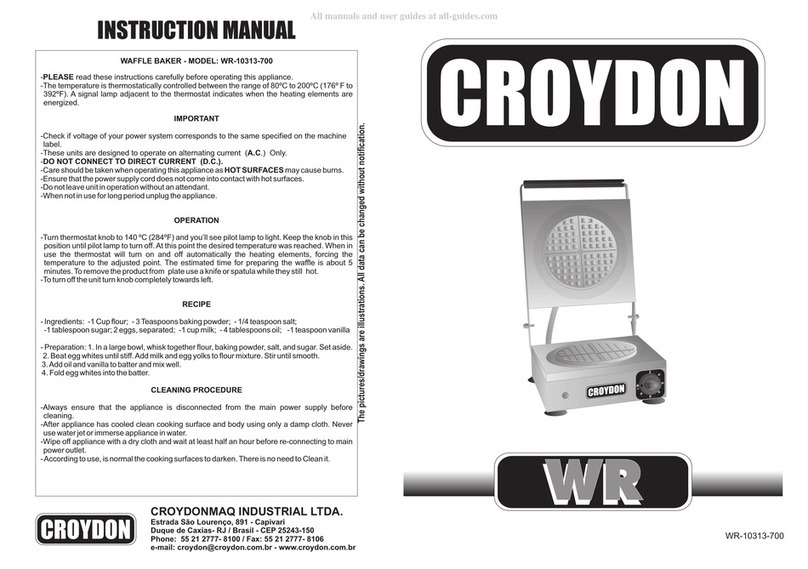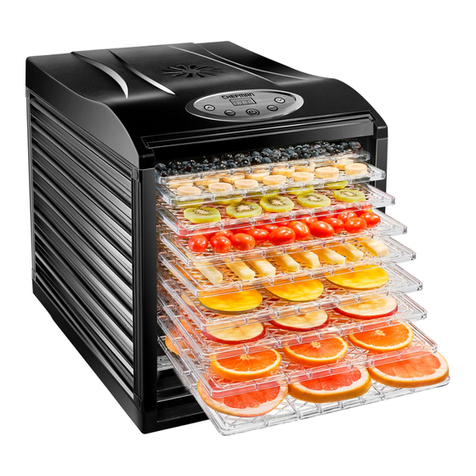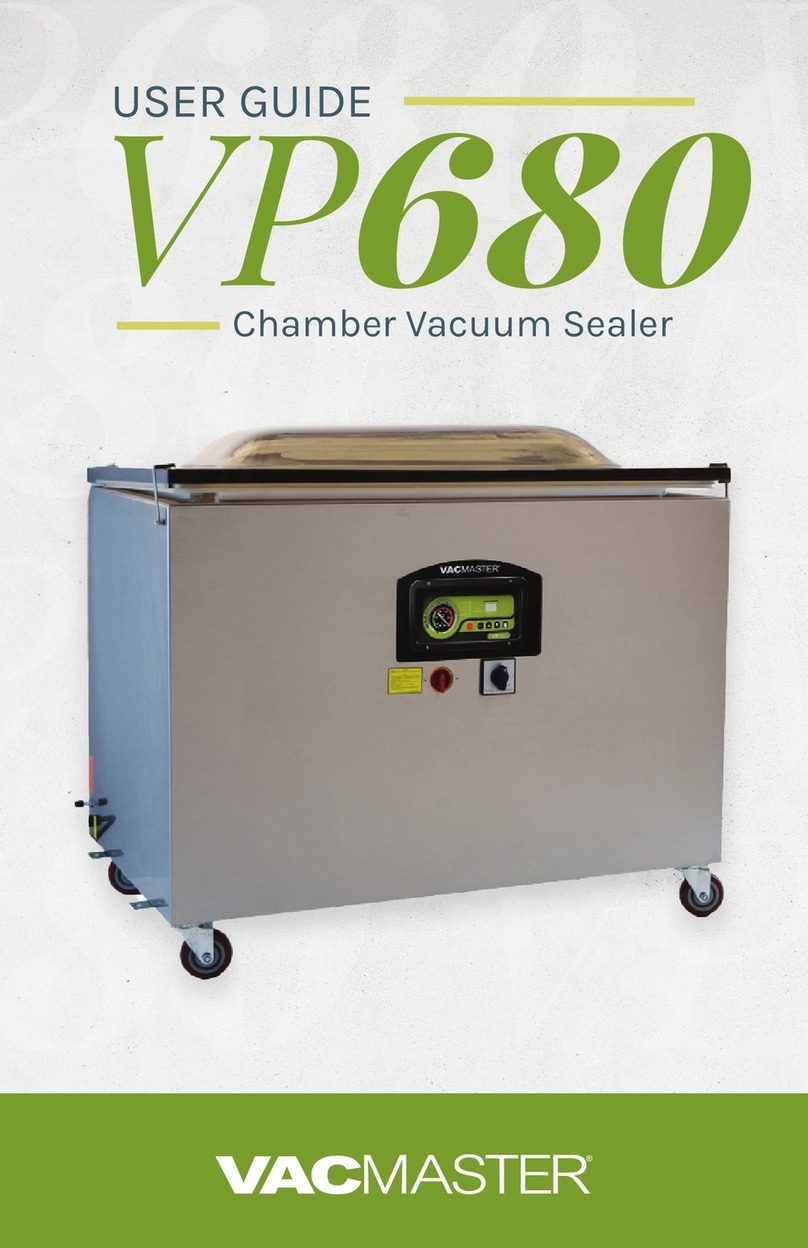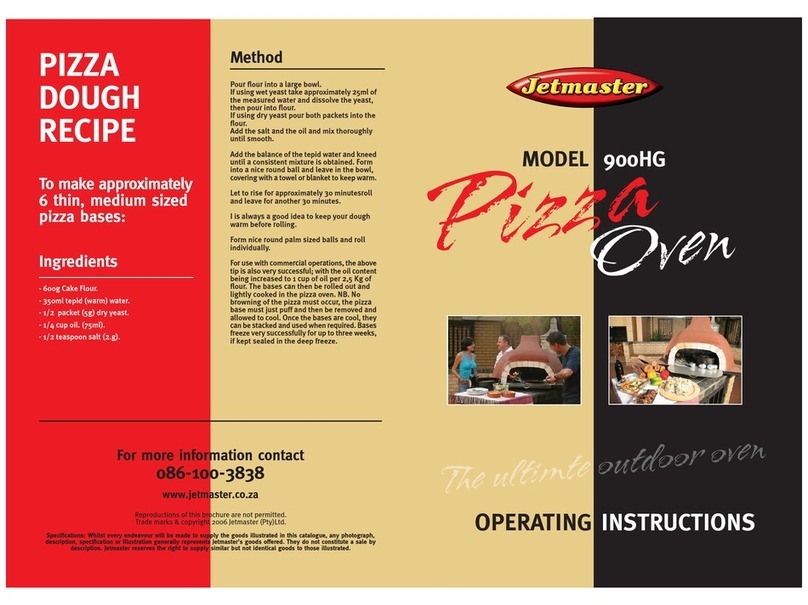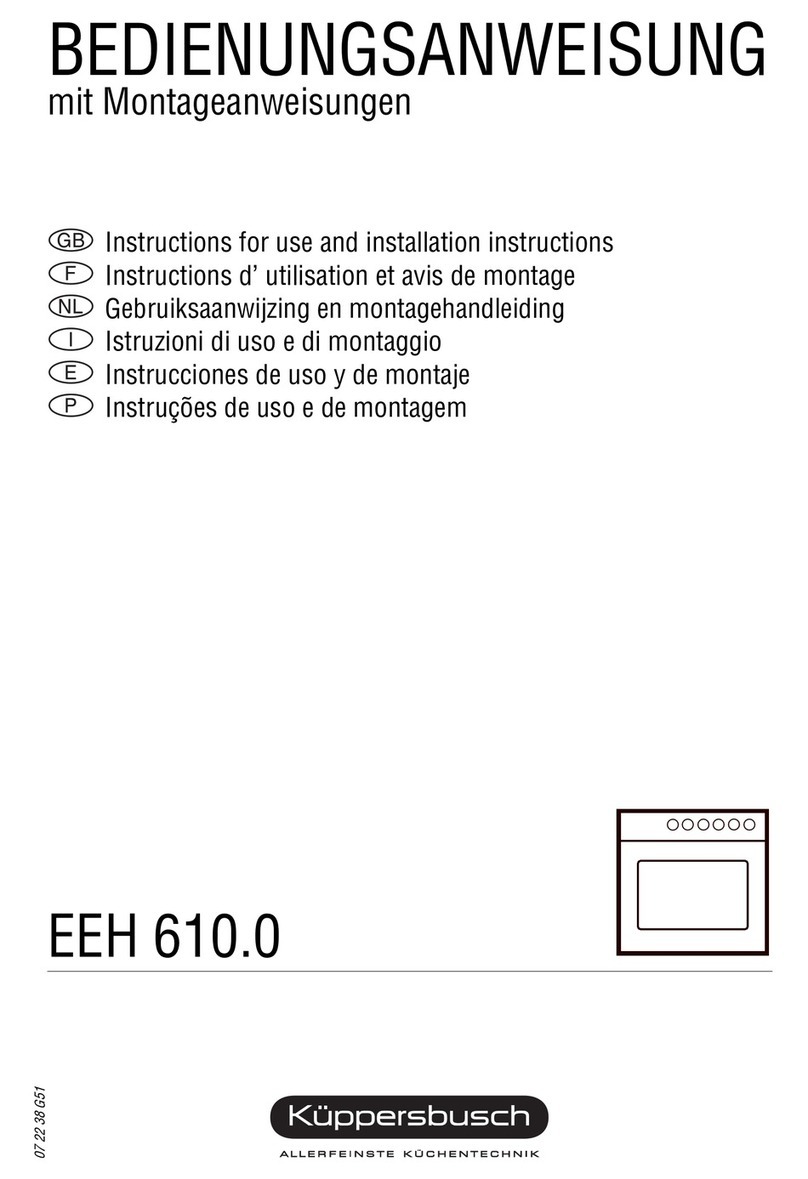
3.3.3 Removing the gear casing
1. Cut with a knife between the motor flange (1020) and the gear
housing (1088) to protect the paint.
2. Remove the screws (1099). Lift the unit with a crane and knock
the motor housing free of the gear casing. Remove the gear
casing.
3. Remove the planet carrier (1067) and the sun wheel (1060).
4. Remove the O-ring (1071) from the sun wheel.
5. Remove the O-ring (1022) from the motor flange (1020).
6. Remove the lower lip seal (1054) from the motor flange. Note:
This applies only to non-explosion-proof mixers.
Explosion-proof mixers have a mechanical shaft seal
instead of a lip seal.
7. Remove the screws (1064) from the ring gear (1062).
8. Remove the ring gear.
9. Remove the retaining ring (1089) from the gear shaft (1093).
10. Unlock the lock washer (1091) from the slotted nut (1090).
11. Remove the slotted nut and the lock washer from the shaft.
12. Knock the shaft out of the gear casing using a plastic hammer.
The inner bearing ring (1092) is removed at the same time.
13. Remove both outer bearing rings (1092 and 1094).
14. Remove the inner bearing ring (1094) from the shaft.
3.3.4 Draining the oil
1. Place the motor in vertical position with the shaft upwards.
Remove the plug (1052) and drain the oil into a suitable
container. Note: This applies only to non-explosion-proof
mixers.
Explosion-proof mixers do not have any oil inside the
motor.
3.3.5 Removing the cable
1. Place the motor in horizontal position with the terminal box
upwards.
2. Remove the screws (1024).
3. Cut with a knife along the terminal box cover (1023) to protect
the paint.
4. Remove the terminal box cover and the O-ring (1025).
5. Write down the numbers on the wires to ensure correct
connection.
6. Disconnect the cable conductors from the motor windings
including the screw (1028).
7. Remove the cable relief (1009) from the cable (1001).
8. Cut with a knife between the terminal box and the cable flange
(1002) to protect the paint.
9. Remove the screws (1008), cable flange (1002) and cable
(1001).
10. Remove the small cable seal (1006), thrust washer (1005), large
cable seal (1004), cable guide (1003) and cable flange (1002)
with O-ring (1007).
3.3.6 Removing the motor
1. Place the motor in vertical position with the shaft upwards.
2. Remove the gear head. See section Removing the gear casing.
3. Remove the screws (1021).
4. Cut with a knife between the motor flange (1020) and the motor
housing (1017) to protect the paint.
5. Screw two screws into the threaded holes of the motor flange to
separate the motor flange and the motor housing.
6. Remove the motor flange from the motor housing.
Make sure not to damage the wires of the water-in-oil
sensor (1049).
7. Remove the water-in-oil sensor (1049).
8. Remove the seal washer (1173) from the water-in-oil sensor.
9. Place the motor in horizontal position.
10. Remove the compensation disc (1038) from the ND-end of the
motor housing.
11. Remove the bearing (1039) from the rotor shaft (1019).
12. Place the motor flange and the rotor in a hydraulic press and
separate them using a special pin tool.
13. Remove the bearing (1047) from the rotor shaft.
14. Remove the upper lip seal (1055) from the rotor shaft. Note:
This applies only to non-explosion-proof mixers.
Explosion-proof mixers have a mechanical shaft seal
instead of a lip seal.
15. Remove the O-ring (1022) from the motor flange.
Related information
3.3.3 Removing the gear casing
3.3.7 Removing the stator
AMG.20-55 [ANSI] and AMG.15-40 [DIN]
1. Remove the nut (1158), spring washer (1045) and screw (1044)
from the terminal box inside the motor housing (1017) and mark
the position of the stator.
2. Remove the stator (1018) from the motor housing (1017).
Make sure not to damage any wires.
AMG.75-250 [ANSI] and AMG.55-180 [DIN]
1. Remove the nut (1146), spring washer (1056) and screw (1044)
from the terminal box outside the motor housing.
2. Remove the stator (1018) from the motor housing (1017).
Make sure not to damage any wires.
3. Remove the nut (1046) from the motor housing (1017).
4. Remove the screw (1044) from the motor housing (1017).
5. Disconnect the stator wires from the motor housing (1017) and
pull the stator (1018) out of the motor housing.
7
English (US)

